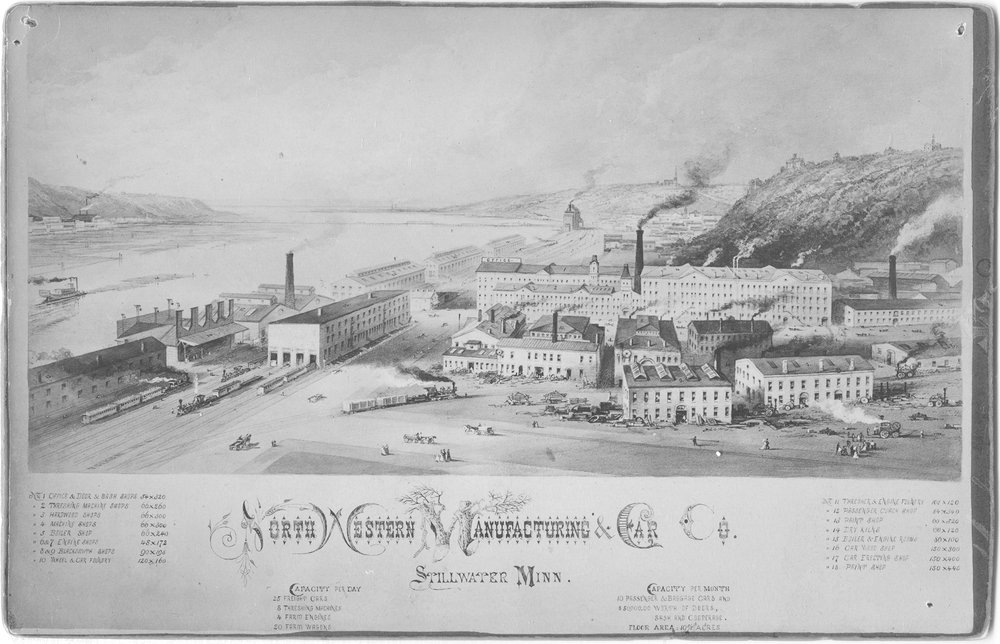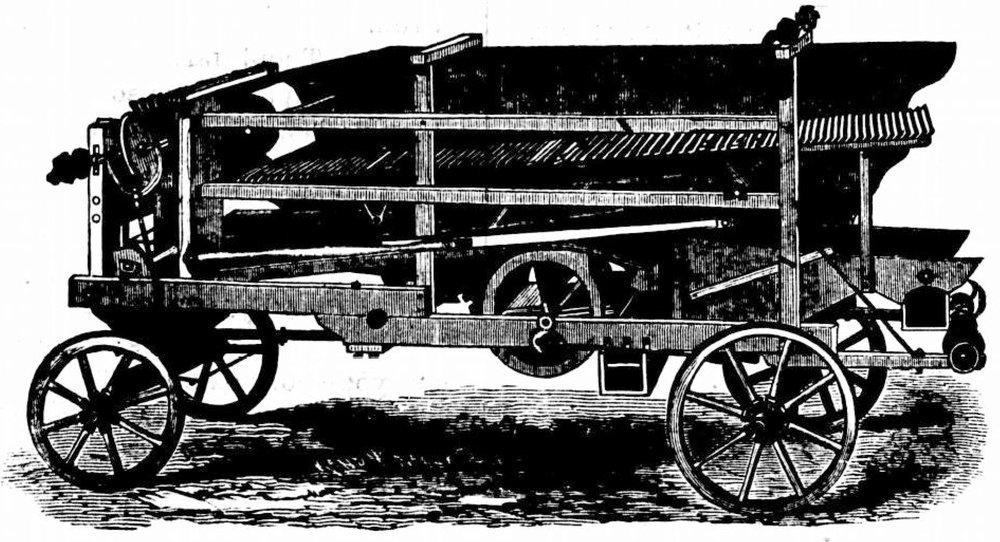Northwest Thresher Company
One of the major industries of the 19th century was that of the farm implement. From horse and plow to the great steam engines of the past, much of the farm industry looked to Stillwater to provide their workhorse engine or the thresher to bring in the crops, and behind that equipment was a major corporation called the Northwest Thresher Company.
As with most companies, the name changed throughout time, and the Northwest Thresher began life as the Seymour, Sabin & Co.
George Seymour had been awarded contracts to construct additional buildings for the state prison in 1861 and again in 1870. Seymour's business started out as a cooperage, making barrels and such, then obtained the contract for prison labor. This would prove a key point in his business, and when Dwight M. Sabin joined him in business in the late 1860s, the company really started to take flight.
In the December 31, 1875 Stillwater Messenger, it was reported that "Seymour, Sabin & Co. have received the contract for manufacturing 100 "Prairie Queen" threshers, to be ready for use the coming season." The following year the company started producing a threshing machine called the "Minnesota Chief" which was of high quality. Because prison labor was used to manufacture it, it was cheaper than any other thresher on the market and soon became the nation's leading thresher.
On May 10, 1882, a new company was formed called the Northwestern Car & Manufacturing Company, and the company of Seymour, Sabin & Co. remained in name only.
By 1884 the company had become extensive. The magazine Wood and Iron reported that "A city has grown up within and without the prison walls at Stillwater, and 1,600 men, of whom less than 300 are convicts, find daily employment there, while $60,000 per month is paid in wages. Sixteen freight cars, seven completed threshers, four portable farm and traction engines are turned out daily, and six passenger coaches per month… A recent purchase of 20,000 acres of hardwood timber lands in Wisconsin, the lumber therefrom to be used in the manufacture of cars, is one index to the magnitude of the business at present existing and contemplation."
The company was located on the St. Croix River, about three quarters of a mile from north to south, and directly across the street from the Minnesota State Prison.
The company was on the brink of bankruptcy by the mid-1880s. A meeting on November 25, 1884 found the company $2 million in debt. The company was reorganized under the name of the Minnesota Thresher Manufacturing Company and placed into receivership, with Edward S. Brown handling the management affairs of the company.
The company later changed names again to the Northwest Thresher Company. The Stillwater Gazette of August 22, 1904 described the buildings and the departments of the business. It reported: "A visit to the extensive factory of this company is a revelation to the uninitiated and an occasion of pleasant and profitable instruction to those familiar with modern manufacture."
From the main manufacturing plant of 85 by 316 feet to the 17,000 square foot foundry, the Northwest Thresher Company continued to provide employment and a quality product for nearly another decade. However, the final end of the company eventually arrived. The August 1, 1917 Stillwater Messenger announced that the Northwest Thresher plant was sold to George H. Atwood for $500,000. A new company would soon be placed in the buildings: the Twin City Forge and Foundry.
As time has gone on, the Northwest Thresher Company has come to mean excellence and quality in their produces. A Northwest threshing machine is still a highly prized machine to threshing collectors all over the world.
Today the Minnesota Department of Corrections still has MINNCOR Industries, a direct descendant of the early Minnesota Chief threshers of the past.
—Brent Peterson
Brent Peterson is the Executive Director of the Washington County Historical Society.


